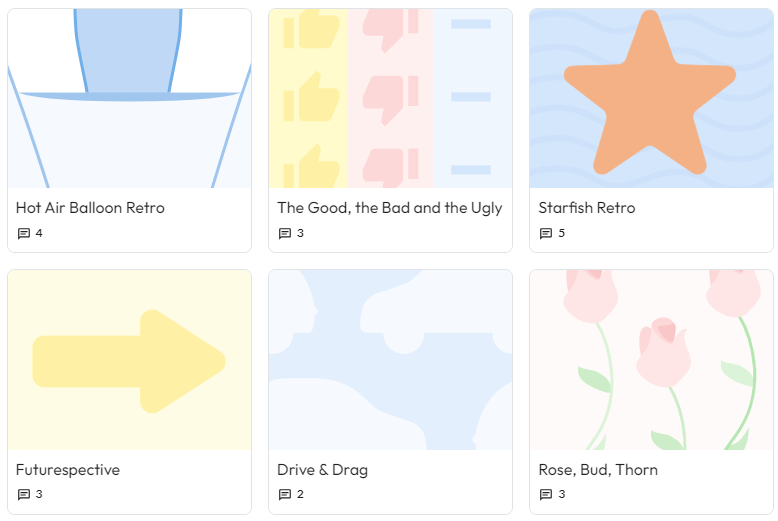The book “Reinventing Organizations” (for example at Thalia available) from the former management consultant and McKinsey partner Frédéric Laloux was published in 2015. In the meantime, it is regarded as the basic book of integral organizational development.
But what makes his work so successful and what is “integral organizational development” about in detail?
For those who may not have time to read the entire book or for those who want to refresh their memories, we are giving a brief summary of the popular book.
Would you like to download the summary as a PDF? No problem: here it is Reinventing Organizations PDF for download.
The Summary: Building Reinventing Organizations
Overall, the book contains three parts, each of which contains different perspectives on the organizational transformation.
Before we go any deeper, a quick note. In two weeks we will hold a Free webinar on "Culture in agile transformation: the 5 most important success factors" - with 11 international experts as our guests! You can find more information in the teaser video below.
If that sounds interesting, check out the Project Scagile website for more information - you can also register for free.
part One looks retrospectively at the history of organizations. How did organizations as we know them come about? What theoretical models are there? From what value consciousness are companies controlled today?
part two deals with practice. With the help of concrete companies, structures and corporate cultures are analyzed that work according to the color scheme used in “teal”, the currently highest phase. You are now wondering what teal should mean in the context of organizational development. You will find out soon!
In Part three it is about applying and transferring the knowledge you have learned. How can a company become “teal” or, in other words, self-managing and holistic?
Reinventing Organizations Summary: History of organizational development
According to Laloux, the history of organizational development began 100,000 years ago. Organizational paradigms used to consist of hunters and gathering gangs. Over the years, this has become an increasingly complex organizational structure. Laloux describes the alliance of hunter and gatherer gangs as infrared structures. The organizations were developed as follows:
The diagram shows that several organizational structures exist in parallel today. This shows the increase in the complexity of organizational structures in the course of evolution.
Red organizations: classic power systems
Red organizations can be equated with classic power systems. These forms of organization are also known as the imperial age and developed 10,000 years ago. Even today there is red organizations in the form of mafias and street gangs.
The groups, which are listed as examples for red organizations, already give first indications of the dynamics within these structures. Red organizations are marked by selfishness, exploitation, strong hierarchies and power imbalances.
Like any other form of organization, this was also created to fulfill certain purposes and the security needs of the members. This need is met through powerful action and authoritarian hierarchies that divide tasks with chains of command. The problem, which, however, behind red organizations is the strong focus of the short-term perspective, whereby long-term success cannot be guaranteed.
Bernstein organizations: formal hierarchies
Developed about 1000 years ago amber organizations, which are characterized by formal hierarchies, stability and control. Amber organizations still exist today in the form of government organizations, public schools, and traditional churches. With the introduction of amber-colored organizational structures, long-term perspectives, formal roles and robust processes could be established.
The organization chart of Amber organizations has a static pyramid structure with clear hierarchical levels and chains of commands. The members identify themselves with job titles. The “command and control” leadership style can be recognized by the decision-making power: decisions are made at the upper hierarchical levels and executed by lower levels, which have to follow the commands.
The problem behind the amber organizations is that the rigid structures make it difficult to adapt to changing conditions.
Orange organizations: performance orientation
Orange organizations that subsequently emerged also followed a basic pyramidal structure. The change, however, was that striving for innovation and asserting yourself in competition required more degrees of freedom.
Interdisciplinary initiatives, expert staff functions, internal consultants and project groups loosen up these rigid hierarchies and thus allow more room for maneuver.
“Command and control” became “prediction and control”. Managers and employees receive clear targets and a certain scope for action on how they can achieve these goals. The development of new departments in organizations such as human resources, marketing and product management etc. contributes to the pursuit of innovation. However, power is often concentrated in the headquarters and not in the operational units themselves. Basically, one can say that orange is the dominant worldview of most leaders in politics and business.
It is often problematic in this organizational form that profit is used as the only incentive. This extrinsic incentive is often not sufficient and employees can become demotivated.
Green organizations: pluralistic order
Over time, pluralistic ones developed green organizations, which are also pyramid-shaped, but involve many fundamental changes. In this form of organization, the focus is on empowering employees at the front: middle and upper management should share power and give up control. The goal is serving executives. You can imagine the pyramid the other way around: middle and upper management is supported by the CEO, who in turn support the employees at the front.
The characteristics which in green organizations Jumping directly in the eye are customer satisfaction, shared values and a high level of commitment. Through the creation green organizations a balanced balance of interests among stakeholders and the promotion of cultures could be achieved. In particular, organizations that operate according to agile and lean principles and companies with a distinctive corporate culture, such as Southwest Airlines and Ben & Jerry's, can serve as examples for green organizations be seen.
Of course, green organizations also have their limits: the decision-making process can be slowed down by building consensus and the hierarchical structures can conflict with the desire for greater autonomy for people.
Turquoise organizations: Agile organizations
Probably the biggest change came with the emergence turquoise (teal) organizations. The pyramidal structures were broken up and replaced by flowing, natural hierarchies. The power comes to those who have the most expertise, passion or interest. Turquoise organizations are complex, adaptive systems with distributed authority.
The characteristics of the turquoise organizations are the higher determination and distributed decision-making that arises from their role as “living entities”. This new organizational structure enables wholeness, self-organization and evolutionary meaning.
But although some companies (e.g. Patagonia, MorningStar, Buurtzorg etc.) already act on these principles, many question the feasibility of this organizational structure.
Conclusion of the summary of Reinventing Organizations: organizational structures
On the basis of these different organizational paradigms within the framework of "Reinventing Organizations" it becomes clear that different organizational forms can not only exist in parallel, but that each of them has valuable ideas which have contributed to the evolution of the organizations. Since the conditions are not the same everywhere, the coexistence of different organizational forms will continue in the future. Newer forms of organization, however, have an easier time with the increasing complexity and networking of our today's VUCA World deal.
How can organizations become turquoise?
The most important thing in breakthrough to one turquoise organization is the pursuit of self-control, evolutionary meaning and holism. To do this, traditional hierarchies of power must be abolished and power must be distributed equally among all members of the organization. But how does it work?
"In evolutionary teal, we shift from external to internal yardsticks in our decision-making."
Frédéric Laloux
To achieve this, members must act according to their own standards. For that there is intrinsic motivation and a culture of Trust of immense relevance. Members must have the responsibility and decision-making power for their own area in order to be able to act autonomously and in accordance with their own standards. In this way, pyramidal power structures are dissolved, authorities are distributed and organizations increase turquoise.
The entire book "Reinventing Organizations" of course offers many exciting details and examples that have not found a place in this summary. It is worth reading the book in full!
Most Agile Coaches and Scrum Masters run in circles...
...fixing superficial symptoms. Time to use psychology to foster sustainable mindset change.








